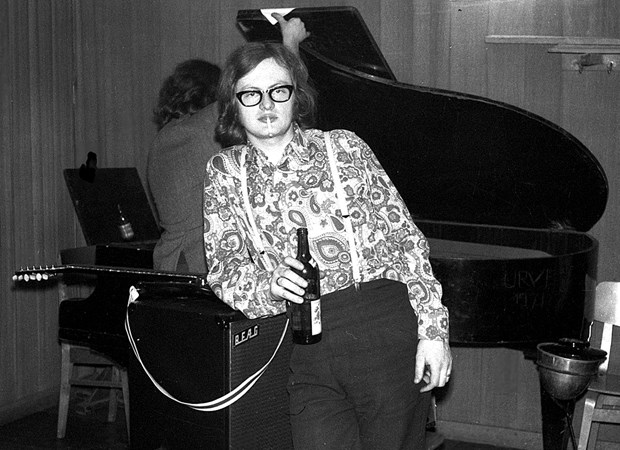Soviet Hippies: The Psychedelic Underground of 1970s Estonia, Presentation House Gallery until Aug. 3.
Make love, not repressive nationalistic authoritarian policies under the guise of a dictatorship of the proletariat designed to usher in a socialist mode of production.
Hippies of the 1960s are sometimes seen as a West Coast phenomenon, as unique to California as Coast Redwoods or a movie actor's ability to serve as governor.
However, Presentation House Gallery is currently replete with photos and recollections of the Soviet Union's hippie movement, showing just how far that vagabond movement travelled.
"Young people were feeling there was no hope," says Presentation House Gallery curator Helga Pakasaar. "The need to escape was intense."
Nikita Khrushchev was in power and more and more young people managed to snag transistor radios. Through those radios and a robust black market for hippie albums, Western culture began to slip past the Iron Curtain.
For those who believed "the world was one big lie," hippie culture and the cult of love, pacifism, and cosmic and actual travel represented another path to follow, according to exhibit curators Terje Toomistu and Kiwa.
The underground movement compelled poets, bohemians, artists, and irritators of the bourgeois consciousness.
A government report from 1969 stated "longhairs," characterized by outlandish clothing and a sloppy manner consistent with degenerate Western fashions, were only interested in "hanging around on the streets, and booze-ups that are accompanied by orgies and breaches of public order."
"Statistics show that worker families comprise the majority of these inferior families," according to the report.
Despite strategic harassment by the KGB, which included temporarily locking up youth in a venereal disease clinic disrespecting the regime, clandestine bars where bands played riffs on Western hippie music popped up in Estonia and Crimea.
Self-published spiritual manuals stemming from Eastern philosophies on yoga and meditation circulated, offering an alternative to the Soviet Union's official atheism.
Hippies aspired to "pure thought," according to Pakasaar. "If you put your mind somewhere else, you can be somewhere else," she explains.
Besides music and meditation, there were drugs. However, it wasn't as easy to take the Electric Kool-Aid Acid Test in 1960s Estonia as it was at Berkley.
"They didn't have access to LSD but they knew that it really put you into another place so they made these drugs out of leftover prescription drugs," Pakasaar says.
But if drugs were hard to come by, clothes were almost impossible.
Pants that flared at the bottom crossed a line into Western decadence.
"The tailors had been instructed that it was illegal to wear pants like that," Pakasaar says.
But there was one tailor willing to sew "forbidden hippie trousers."
Aleksander Dormidontov, described by the KGB as "president of the hippies," supplied bellbottoms for Estonia's cornflower children.
Toomistu and Kiwa's exploration of Soviet hippie culture began as an anthropological study.
After putting out a call for former or current hippies they fielded responses from a rogue's gallery of jokers, smokers and midnight tokers, much to the surprise of many Estonians who were unaware their country had ever produced hippies.
"The people that they interviewed had never been taken seriously," Pakasaar says. "That's why I think this project is really important. .. to my knowledge it's the first time it's been articulated."
Estonia's independence from the Soviet Union has allowed a new legacy to be written, according to Pakasaar.
"I think this is the beginning," she says. "Those histories are really only emerging now."
Along with Soviet Hippies, Presentation House Gallery is also featuring Bruce Stewart: Dollarton Pleasure Faire, which looks at the hippies, academics, and academic hippies who migrated to the simple and cheap life afforded by Maplewood Mudflats.
Along with a look at wilderness shelters photographed by Vancouver artist Liz Magor, the three exhibits show the appeal of transformation through escape. However, the exhibits also seem to point to the limits of the state when it comes to offering happiness.
Soviet Hippies curator Toomistu quotes outlaw tailor Dormidontov as saying, "Lenin didn't invent rock 'n' roll. That was his trouble."



